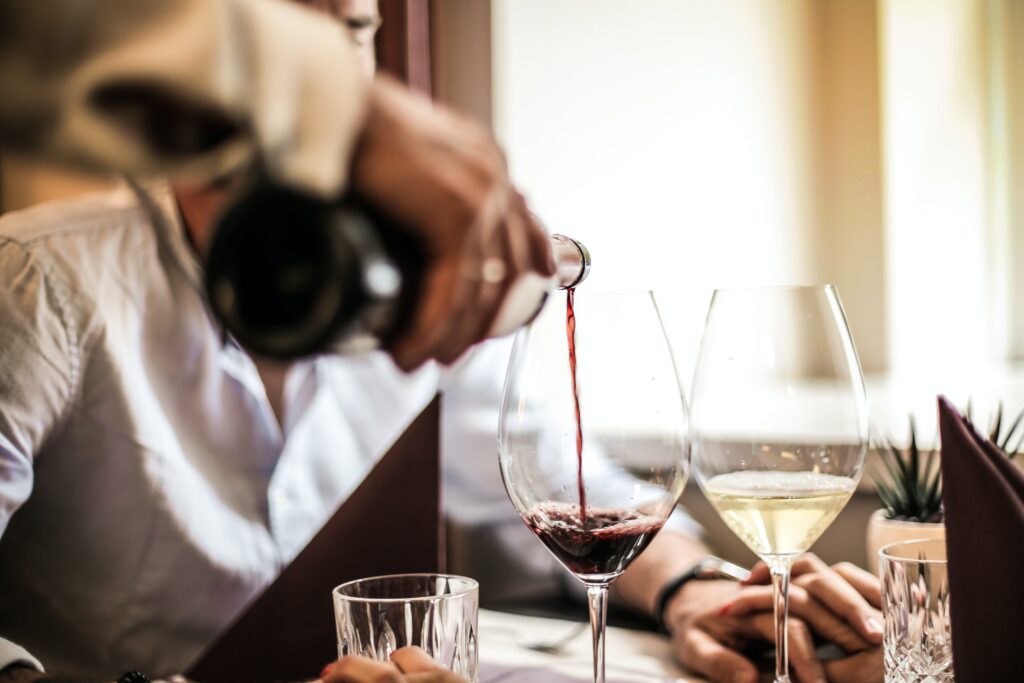One factor that most interferes with wine tasting is the temperature at which it is served. The ideal temperature guarantees the full expression of the aromas and flavors of the wine. A glass served too hot or too cold can intensify or mask certain taste characteristics. Another mistake is serving wines at room temperature. Regions, where temperatures reach 40°C or -20°C, will certainly cause instability in your wine. These hot and cold alternations are easily perceived in our taste.
Taste buds have reduced sensitivity when some food or drink temperature is below 10°C and go dormant at temperatures below 4°C. The alcohol content becomes predominant in beverages at temperatures above 20°C, as it evaporates easily.
As with alcohol, the drink’s sweetness is evident at a high temperature, but the perception of sugar on our palate loses intensity when the wine is served chilled. The aromas quickly evaporate at higher temperatures and become neutral when the drink is icy.
Present in red wines, tannins are responsible for adding astringency. The colder the drink, the more potent the tannins, which makes the wine unpleasant.
In this article, you will understand in detail the ideal temperature for serving wines.
Wine is the most healthful and most hygienic of beverages
― Louis Pasteur
You can also watch this and other exclusive GA Originals on YouTube.
Jump To Section
Red Wine

Red wine should be served chilled just below room temperature, around 16˚C to 18˚C. Very cold red wines may have a certain roughness due to the enhanced tannins.
White Wine
White wines should be cooler than red wines, around 7˚C to 12˚C, as they are a symbol of freshness, lightness, and delicate aromas.
Rosé Wine
Rosé wines are also light and refreshing but can have a little more structure than some whites. Its temperature can be between 6˚C to 13°C.
Sparkling Wine
Sparkling wines should be served between 3˚C and 7˚C. When served at a temperature above that, the carbon dioxide is released faster, reducing the bubbles or perlage.
Dessert And Fortified Wine
Dessert wines depend on the style to determine the ideal temperature. Ice Wine, Tokaji, or Sauternes, usually late-harvest grapes, are served at a temperature between 3˚C to 7˚C. Fortified wines, such as port or sherry, are served between 14ºC and 18ºC.
It is worth remembering that wine is a living matter and continues to develop even after bottling. One factor contributing to its depreciation is inadequate storage, heat, and solar radiation that can cause wine oxidation.
A good option for your selection is wine cellars that work like small fridges. Some wine cellars can refrigerate reds and whites simultaneously; just set the desired temperature for each compartment, and your wine bottles will be protected and ready to drink.
Did you like this article?
I hope this article has helped you improve your skills. To learn more, take a look at Sauvignon Blanc: The Enthusiast’s Guide To Wine Lovers.
Leave a comment below and share our content.
Help our community grow by following our social media on Spotify, Instagram, Facebook, Youtube, and Tiktok. And stay up to date with the news from the world of Gastronomy.
Don’t forget to tag @gastrovinoacademy on Instagram and hashtag it #gastrovinoacademy.
Cheers 🍷


